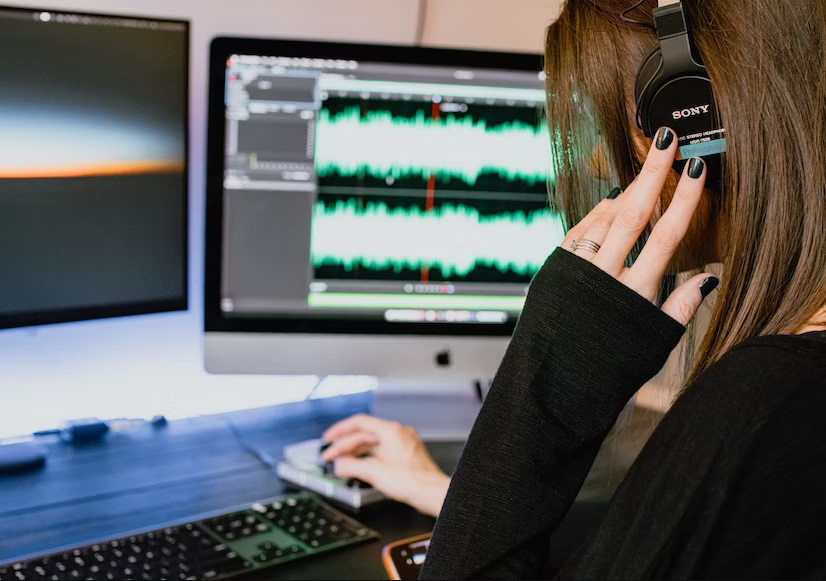 |
| AI Voices: The Challenge of Spotting Deepfake Audio |
Introduction
In recent years, artificial intelligence (AI) technology has advanced rapidly, bringing numerous benefits to various industries. However, with great advancements come significant challenges, and one of the most pressing issues is the rise of deepfake audio. Deepfake audio refers to artificially generated voices that are so realistic that they can be mistaken for real human voices. Even to the trained ear, it has become increasingly difficult to discern between genuine and manipulated audio. This article explores the challenges of spotting AI-generated voices, the potential implications, and the measures being taken to address this rising concern.
1. The Proliferation of Deepfake Technology
1.1 The Emergence of AI-Generated Voices
The rapid development of AI technology has paved the way for sophisticated voice synthesis algorithms. These algorithms utilize deep learning techniques to analyze vast datasets of human speech, enabling them to create highly convincing synthetic voices.
1.2 The Threat of Misinformation
The ease of generating deepfake audio raises concerns about misinformation and its potential to mislead the public. As these AI-generated voices become more indistinguishable from genuine ones, the risk of spreading false narratives and manipulated content becomes all too real.
2. The Perplexity of Deepfake Audio
2.1 Understanding Perplexity
Perplexity is a measure used to evaluate the quality of language models, including AI-generated voices. It indicates how well a model predicts a sequence of words. The lower the perplexity, the more coherent and natural the audio sounds.
2.2 Achieving High Perplexity in AI Voices
Developers of deepfake technology strive to achieve high perplexity scores to make the synthetic voices sound more human-like. This leads to a significant challenge for detecting AI-generated audio, as traditional methods may not be effective in differentiating between real and fake voices.
3. The Issue of Burstiness
3.1 Understanding Burstiness
Burstiness refers to the irregular distribution of sounds in audio generated by deepfake models. It can lead to certain words or syllables being repeated excessively or unnaturally, making the audio sound suspicious.
3.2 Balancing Burstiness and Perplexity
The challenge for developers is to find a balance between achieving high perplexity to create realistic voices and controlling burstiness to avoid suspicion. Striking this balance makes it even more challenging for humans to identify deepfake audio.
4. The Importance of Context
4.1 Context in Voice Recognition
Context plays a vital role in understanding speech. Humans rely on the context of a conversation to interpret meaning and emotions accurately. Deepfake technology, however, may struggle to maintain consistent context throughout synthesized speech.
4.2 Contextual Inconsistencies in Deepfake Audio
While AI-generated voices may sound natural in isolated sentences, they may fail to maintain context in extended conversations. This contextual inconsistency can be a red flag when trying to identify deepfake audio.
5. Addressing the Challenge
5.1 Advancements in Voice Forensics
Researchers are continually developing sophisticated voice forensics tools to detect deepfake audio. These tools leverage machine learning algorithms and signal processing techniques to spot anomalies in synthesized speech.
5.2 Collaborative Efforts
Given the severity of the issue, various stakeholders, including tech companies, researchers, and policymakers, are coming together to combat the spread of deepfake audio. Collaborative efforts are essential to stay one step ahead of malicious actors using this technology for harmful purposes.
Conclusion
The rise of AI-generated voices presents a significant challenge in the battle against misinformation and deception. With high levels of perplexity and burstiness, detecting deepfake audio is becoming increasingly difficult. Nonetheless, advancements in voice forensics and collaborative efforts offer hope in addressing this issue. As technology continues to evolve, it is crucial for society to remain vigilant and proactive in safeguarding against the misuse of AI-generated voices.
FAQs
Can AI-generated voices be used for positive applications?
Yes, AI-generated voices have various positive applications, such as in text-to-speech systems, accessibility tools, and language translation services.
Are there any legal measures to control the misuse of deepfake audio?
Some countries have started to introduce legislation to address the misuse of deepfake technology and combat its potential negative consequences.
Can humans ever completely outsmart deepfake audio?
While it may be challenging, humans, together with advanced AI-driven detection tools, can make significant progress in combating deepfake audio.
What role do social media platforms play in controlling deepfake content?
Social media platforms are increasingly investing in AI-driven content moderation systems to detect and remove deepfake content from their platforms.
How can individuals protect themselves from deepfake audio attacks?
Being cautious about the sources of audio content and using reputable voice recognition software can help individuals protect themselves from falling victim to deepfake audio attacks.


